|
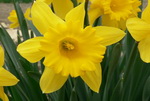 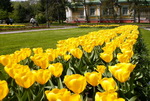 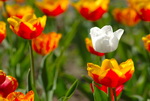
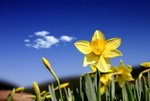 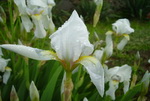 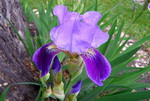
Tulips are early bloomers, flowering in early spring, mid-season bloomers, or late bloomers. Late bloomers are the largest group, with the widest range of growth habits and colors. Tulips flourish in any good soil but, like roses, do best in well-drained loam. The bulbs are planted in autumn at depths of 6 or more inches. These perennial plants flower annually for a few years, but eventually flowering diminishes. For best flower yields, after four to five years it is necessary to dig up bulbs after the flowers are gone and the foliage yellows. The bulbs should then be stored in a cool, dry place and replanted in autumn. Tulips are rarely attacked by garden pests.
Daffodil bulbs are planted in the fall, in loose soil, about 4 inches (10 centimeters) deep. The plants appear in mid-February. Their blossoms open in early April, announcing spring. Like tulips, the plants flower well, annually, for a few years and then diminish. For best flower yields, it is useful to store the bulbs every four to five years in the manner described above for tulips.
Irises bloom from March to July and may be planted in the spring before blooming or in the autumn. These perennials give the best flowers if plants are replanted every four to five years to eliminate the problem of overcrowding. Bearded irises do best in sunny areas where the soil is not too rich, but beardless ones prefer damp, rich soil. Iris diseases include crown rot, soft rot, and leaf spot. If the disease is serious, roots and soil may have to be treated. The worst iris insect enemy is the iris borer. Its larvae eat through leaves and roots, bringing on soft rot.
|
